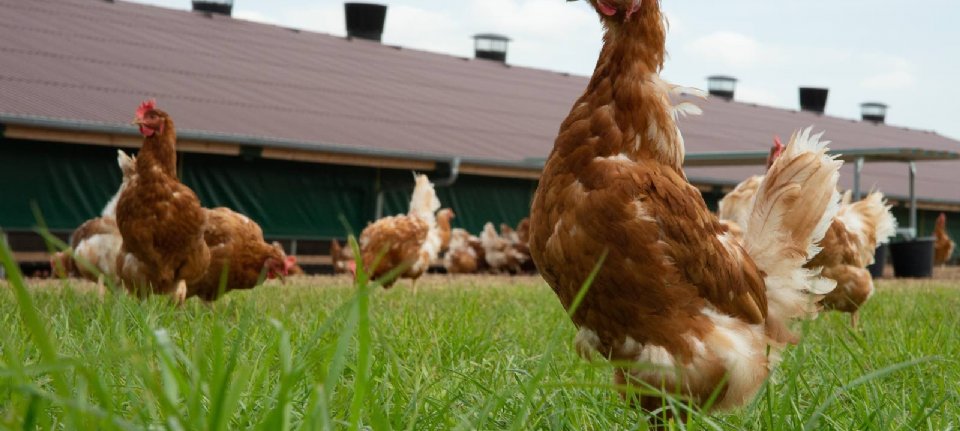It remains difficult to estimate the risk of bird flu. The virus may be in our country earlier than expected. This is clear this year. For poultry farmers, this means that vigilance has to start early in the autumn and that measures are needed for a large part of the year if they are outside.
–
The highly pathogenic avian influenza virus H5N8 (HPAI H5N8), which has been demonstrated on three commercial poultry farms in the Netherlands, probably entered the Netherlands via wild waterfowl. The contamination was early this year, while the weather conditions did not immediately give rise to an early migration of water birds and therefore an early contamination.
The European Food Safety Authority (EFSA) issued a warning on October 1 that there were risks of spreading highly pathogenic avian flu to Europe. But at that time, no dead water birds had been found on the migration routes from the infected areas in Russia and Kazakhstan to the Netherlands.
Risk was estimated to be low
The Ministry of Agriculture, Nature and Food Quality therefore saw no reason to assume a high risk of the introduction of HPAI H5N8 in the Netherlands. The risk was still estimated to be relatively low, ie 5 to 15 percent. Raising free-range chickens was not yet on the agenda.
Intrusion can be done via outlet, air inlet, vermin and humans
–
–
On October 21, it turned out that dead mute swans were infected with the highly pathogenic H5N8 variant. The next day, the risk of introduction was estimated to be high by the expert consultation, and Agriculture Minister Carola Schouten took the decision to make housing poultry compulsory.
This obligation to keep a house did not prevent a parent stock company in the Altforst from becoming infected on 29 October, followed by a laying hen farm in Puiflijk on 5 November and a laying hen farm in Lutjegast on 10 November.
Companies without an extension
It is striking that the companies in Altforst, Puiflijk and Lutjegast have no extension. The risk of contamination should then be smaller. In addition, the company in Altforst is a parent farm where the biosecurity measures are good. The bird flu virus must therefore have entered in a different way.
This could have happened via the air, vermin or humans, says Teun Fabri, head of poultry health care at Royal GD. ‘If it comes through the air, it could be that contaminated manure has gotten onto the roof, near the air inlet. Then it can possibly enter, because it is drawn in with the ventilation air. Feathers from wild water birds can also pose a risk. ‘
Pests
Pests are a greater risk. Mice or rats that come into contact with the manure of infected wild waterfowl outdoors can bring the bird flu virus into the house and thus transfer the infection to chickens. The poultry farmer himself, his employees or visitors can also take the virus inside.
The infection in Altforst is almost certainly not from the infected mute swans in Kockengen. ‘Those mute swans don’t migrate long distances, says a spokesperson for Wageningen Bioveterinary Research. In the area where the infected mute swans were found, dead wigeons were also found that were infected with HPAI H5N8. ‘
Infected via wigeons
The chance that the infections entered the Netherlands via wigeons or other wild water birds is very high. It is now known that live wigeons were caught on October 16 and were found to be infected with the H5N8 avian flu virus. These wigeons migrate over long distances from breeding grounds in Russia to the Netherlands to hibernate.
Wageningen Bioveterinary Research has unraveled the genetic code of the H5N8 virus found in the Netherlands. It shows that it is related to the HPAI H5N8 viruses found in Russia and Kazakhstan in August. It is therefore likely that this virus was brought to the Netherlands by migratory birds.
Fabri expects wigeons or other wild water birds such as barnacle geese to have infected the farms in Altforst and Puiflijk. ‘The fact that no dead wild waterfowl were found there is not saying everything. Some of the wigeons and barnacle geese survive the infection with the bird flu virus, but can spread it. ‘
Summer
The chance that the virus has been present in the Netherlands throughout the summer in geese that stay here is nil. ‘Then infected wild birds should have been found in the summer. In all studies of live and dead waterfowl, the bird flu virus has not yet been found in the Netherlands this year, ‘said the spokesperson for Wageningen Bioveterinary Research.
Vaccinating poultry is not possible
Vaccination of poultry is not an option to prevent an outbreak of bird flu. That’s because there are no vaccines that can treat every type of bird flu. It is also not always possible to predict which type of bird flu virus will cause problems. The highly pathogenic H5N8 variant can be expected every year, because it is endemic to Russia and Kazakhstan, where the water birds reside in summer, before migrating to northwestern Europe. But that does not always have to lead to an outbreak among the poultry. In addition, vaccination will lead to trade barriers. That is a problem for the Dutch poultry sector, which is dependent on exports.
– .


